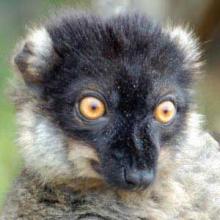You are here
Eulemur fulvus (É. Geoffroy, 1796)

Scientific name:
Scientist name:
(É. Geoffroy, 1796)
Malagasy:
Varika, Varike, Varikosy, Akomba, Gidro, Dedrika (between Mampikony and Port-Bergé), Varikafasin, (Andasibe region), Varikamava (Andasibe region) Comoros Islands: Komba Mainty
English:
Brown Lemur
German:
Brauner Maki
Other english:
Common Brown Lemur
French:
Lémur brun
Family:
Taxa: